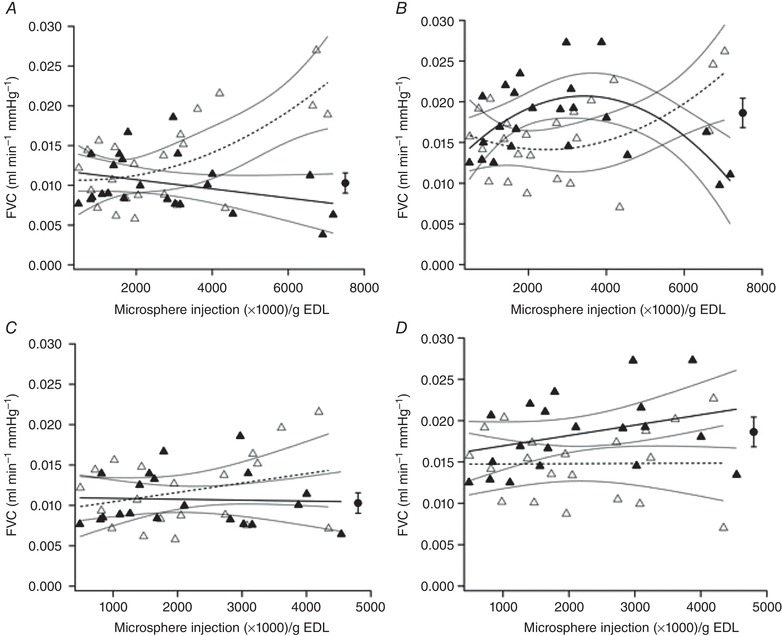Figure 1. Effect of increasing acute microsphere dose (and consequently arteriolar occlusion) on femoral artery vascular conductance (FVC) during rest (A, C) and after 3 min of 10Hz stimulation (B, D).

Ipsilateral (open triangles) and contralateral (filled triangles) data are shown in each panel. 95% confidence intervals are displayed around regression lines. There was a dose‐dependent effect on ipsilateral resting (A) (r 2 = 0.444, P = 0.003) and end‐stimulation (B) (r 2 = 0.304, P = 0.027) FVC. In the resting contralateral limb (A) there was a non‐significant relationship (r 2 = 0.103, P = 0.135) but decreasing end‐stimulation flow (r 2 = 0.393, P = 0.007) was detected with higher dose (B). Given the outliers observed at the highest doses (A, B), these data were omitted and the analyses re‐run. Omitting these confounding data (C, D) we found that there was no effect on resting (C) (ipsilateral: r 2 = 0.089, P = 0.200; contralateral: r 2 = 0.002, P = 0.864) or end‐stimulation (D) (ipsilateral: r 2 = 0.000, P = 0.974; contralateral: r 2 = 0.110, P = 0.153) FVC for mild to moderate arteriolar occlusion (P > 0.05). The effect of femoral ligation on contralateral FVC is also displayed (filled circle); no equivalent ipsilateral value was calculated due to cessation of hindlimb blood flow.
